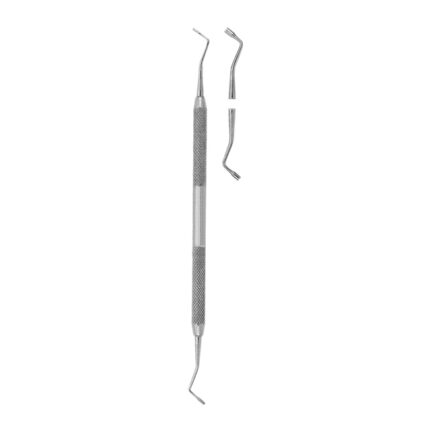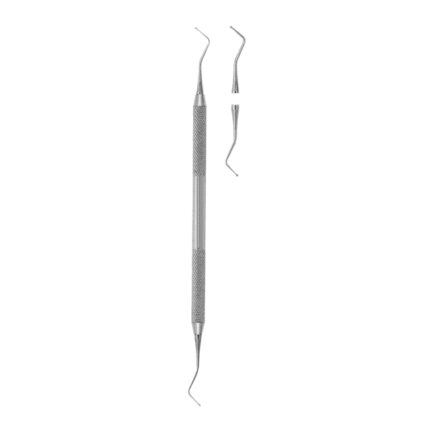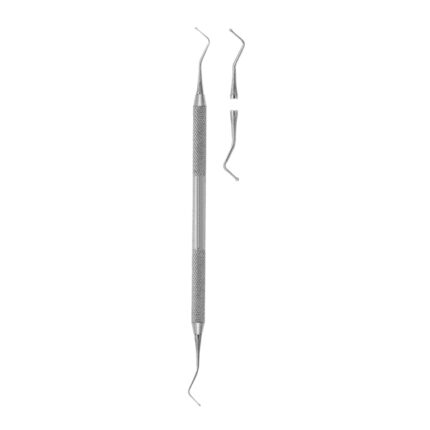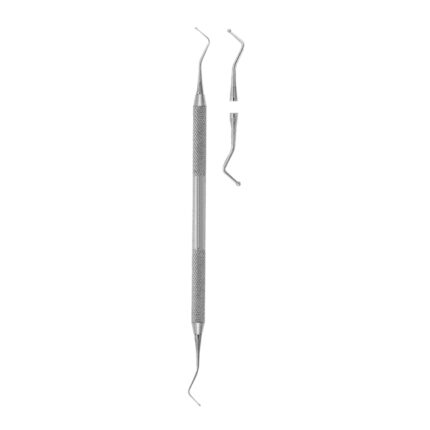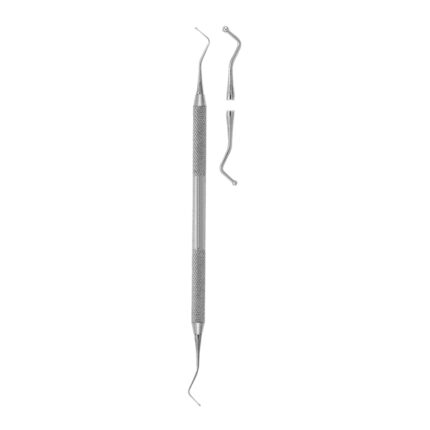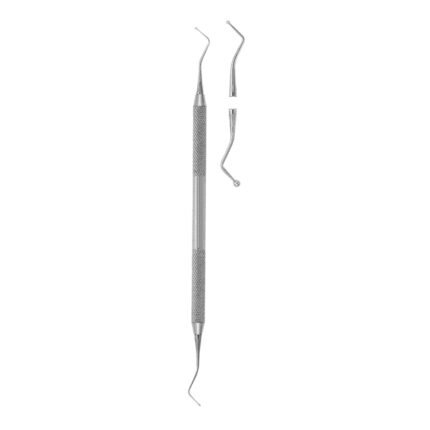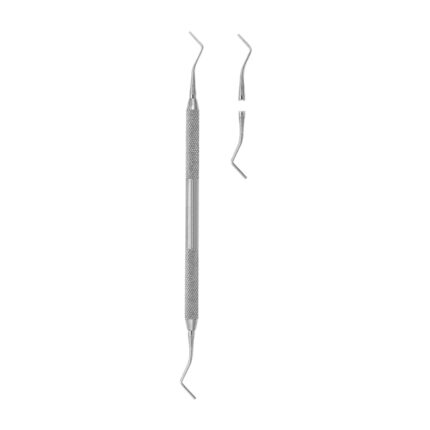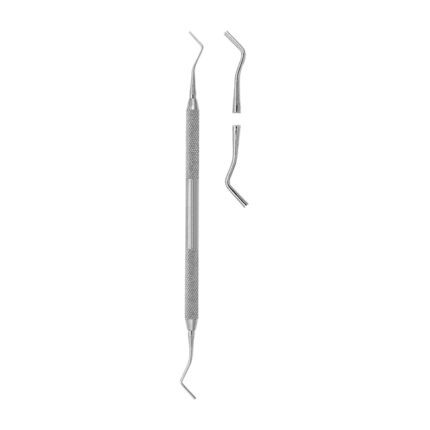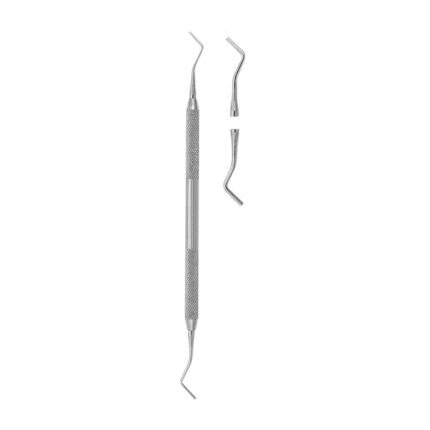Filling instruments, used by dentists during the process of placing dental fillings. Dental fillings are used to restore teeth that have been damaged by decay or trauma.
These instruments come in various shapes and sizes, each designed for specific tasks during the filling procedure. Some common types of filling instruments include:
- Excavators: These instruments are used to remove decayed tooth structure and prepare the cavity for filling. They come in different shapes, such as spoon excavators and hatchet excavators, each suited for different aspects of cavity preparation.
- Pluggers: Pluggers are used to condense and pack the filling material into the prepared cavity. They come in various sizes and shapes to accommodate different tooth surfaces and cavity sizes.
- Burnishers: Burnishers are used to smooth and shape the surface of the filling material once it has been placed in the cavity. They help ensure that the filling is properly adapted to the tooth structure and fits snugly within the cavity.
- Carvers: Carvers are used to shape and contour the filling material, particularly in areas where precise shaping is required, such as the biting surfaces of molars. They help create a smooth and anatomically correct surface for the filling.
- Composite placement instruments: These instruments are specifically designed for placing composite resin fillings, which are tooth-colored fillings used for aesthetic purposes. They help manipulate and shape the composite material during placement.
These are just a few examples of the many filling instruments used in dentistry. Each instrument plays a specific role in the process of placing dental fillings, and dentists carefully select the appropriate instruments based on the type of filling material used and the specific requirements of the procedure.


